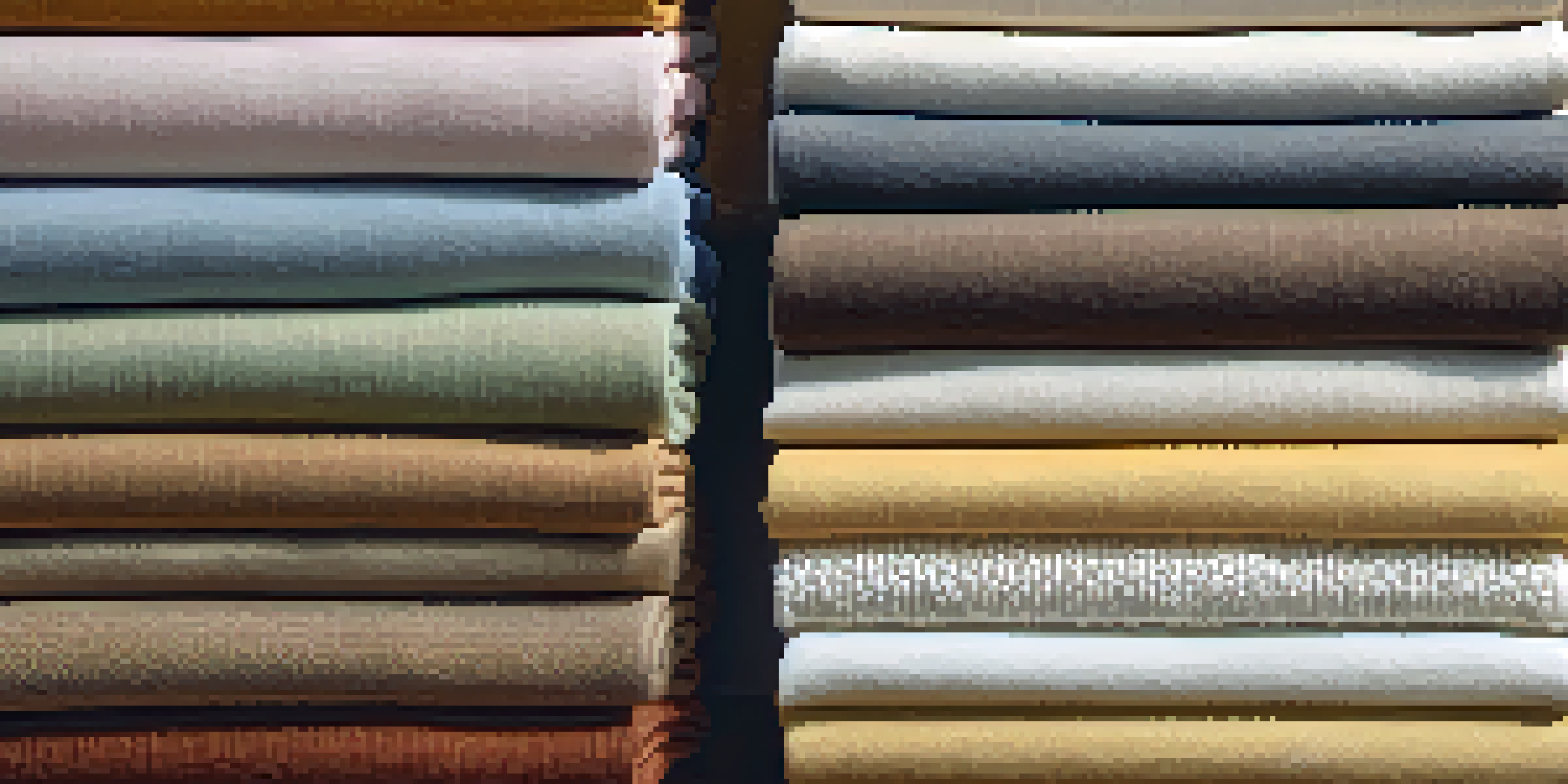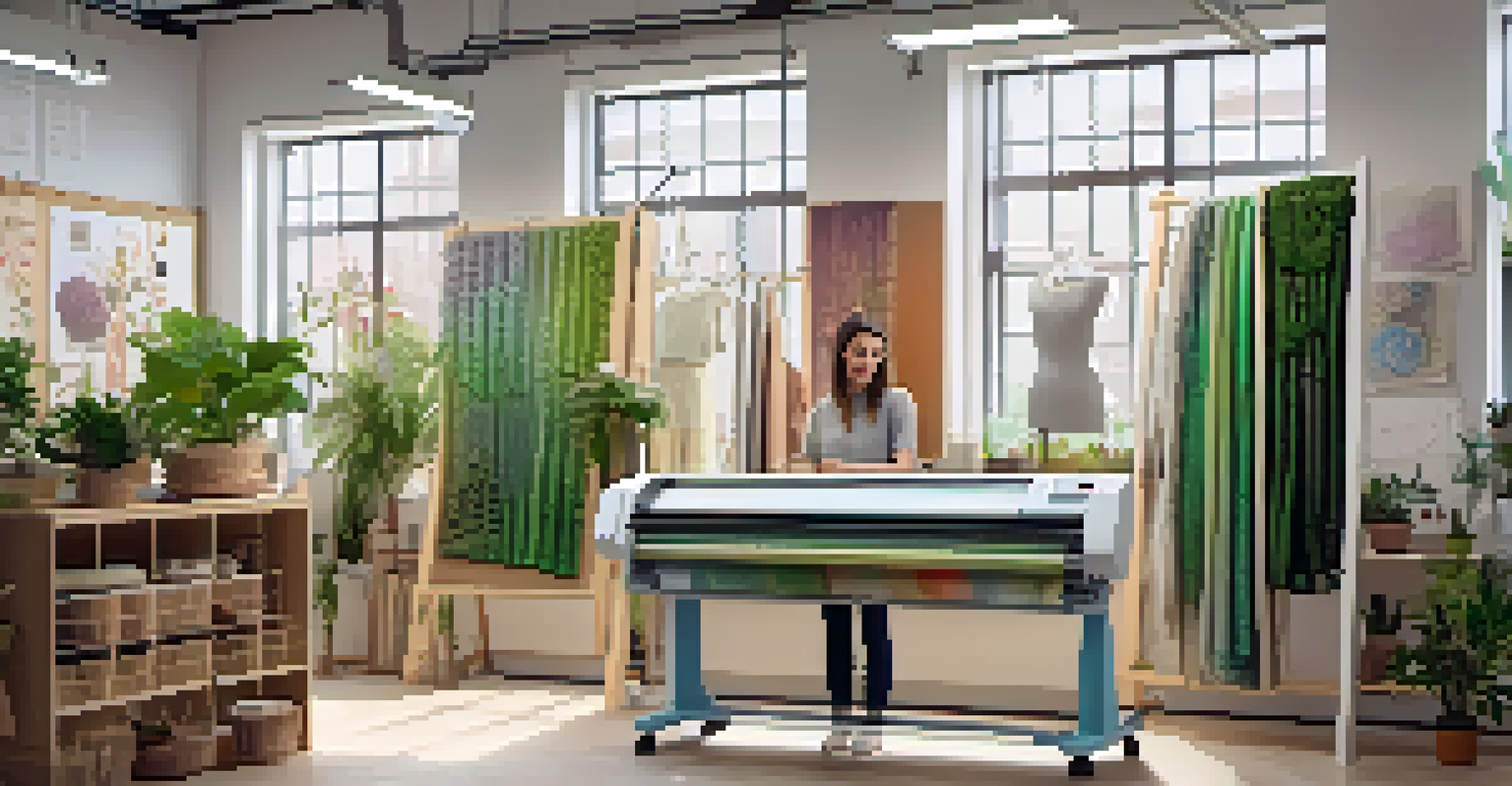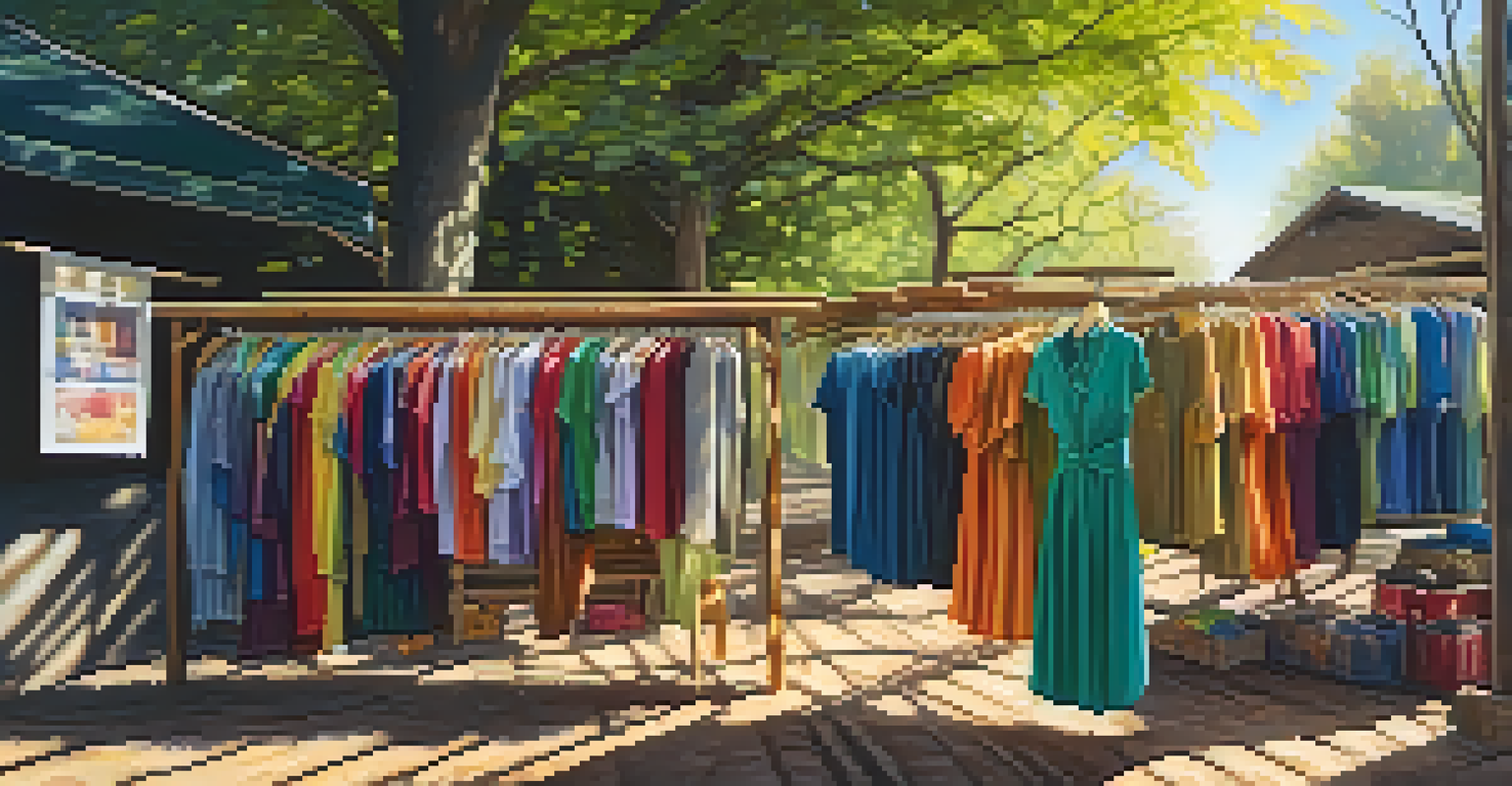Innovative Fabrics: The Future of Sustainable Fashion Choices

Understanding the Importance of Sustainable Fabrics
Sustainable fabrics are becoming a pivotal part of the fashion industry, addressing environmental concerns and ethical practices. As consumers grow more aware of their impact on the planet, the demand for eco-friendly materials has surged. This shift not only benefits the environment but also encourages brands to innovate and source responsibly.
Fashion is the armor to survive the reality of everyday life.
Choosing sustainable fabrics means opting for materials that reduce waste, use fewer resources, and minimize carbon footprints. From organic cotton to recycled polyester, these fabrics are designed to lessen the impact on our planet. In essence, they represent a more mindful approach to fashion.
Moreover, sustainable fabrics often boast unique qualities that enhance wearability and comfort. They can be breathable, moisture-wicking, and even antimicrobial, providing both style and functionality. This evolution in fabric technology is paving the way for a brighter, more sustainable future in fashion.
Key Players in Innovative Fabric Development
Numerous companies and organizations are at the forefront of developing innovative fabrics. Brands like Patagonia and Stella McCartney lead the charge by prioritizing environmentally friendly materials in their collections. Their commitment to sustainability serves as a beacon for others in the industry.

Additionally, many startups are emerging with creative solutions to fabric production. For instance, companies are experimenting with bio-fabrication, using microorganisms to create materials that are both sustainable and stylish. These innovations not only challenge traditional methods but also inspire a new wave of thinking in textile production.
Sustainable Fabrics Drive Change
The fashion industry's shift towards sustainable fabrics addresses environmental concerns and encourages responsible sourcing.
The collaboration between fashion designers and material scientists is also key in this journey. Together, they explore new possibilities, pushing boundaries to create fabrics that are not only eco-friendly but also aesthetically pleasing. This partnership highlights the importance of creativity and science in crafting the future of sustainable fashion.
The Rise of Recycled Materials in Fashion
Recycled materials are increasingly gaining traction as a sustainable fabric choice. From ocean plastics to post-consumer textiles, brands are finding new life for materials that would otherwise contribute to landfills. This approach not only reduces waste but also conserves resources used in the production process.
We have a responsibility to the planet and to each other to create a better world through the choices we make.
Fashion brands like Adidas and H&M have embraced recycled materials, creating collections that appeal to eco-conscious consumers. These initiatives showcase how innovative thinking can transform waste into fashionable, high-quality items. By turning trash into treasure, brands are redefining the narrative around sustainability.
Moreover, the use of recycled materials often comes with a story that resonates with consumers. Shoppers are increasingly looking for products that have a positive impact on the environment. When brands share the story behind their recycled fabrics, it fosters a deeper connection with customers and promotes responsible consumerism.
Innovative Natural Fabrics: Nature's Best Solutions
Natural fabrics like hemp, bamboo, and Tencel are making waves in the sustainable fashion arena. These materials are not only biodegradable but also require fewer chemicals and resources to produce compared to traditional cotton or polyester. This makes them a more sustainable choice for environmentally-conscious shoppers.
Hemp, for example, grows quickly and requires little water, making it an excellent alternative to conventional crops. Bamboo is similarly impressive; it grows rapidly and can thrive without pesticides. These natural fibers not only offer durability and comfort but also support sustainable agriculture practices.
Innovation Fuels Fabric Development
Collaboration between designers and material scientists is essential for creating eco-friendly fabrics that are also stylish.
Furthermore, the use of innovative dyeing techniques, such as plant-based dyes, complements these natural fabrics beautifully. By minimizing harmful chemicals in the dyeing process, brands can further enhance the sustainability of their products. This holistic approach not only benefits the environment but also promotes healthier clothing choices for consumers.
The Role of Technology in Fabric Innovation
Technology is playing a crucial role in the development of innovative fabrics for sustainable fashion. Advanced techniques like 3D printing and digital knitting are enabling designers to create intricate patterns and textures while reducing waste. This shift towards tech-driven solutions is transforming how garments are made.
Additionally, smart fabrics are emerging as a game-changer in the industry. These fabrics can regulate temperature, wick moisture, or even change color based on environmental conditions. Such innovations not only elevate the functionality of clothing but also enhance the overall consumer experience.
The integration of technology in fabric production also streamlines the supply chain, making it more efficient and less resource-intensive. By leveraging data and automation, brands can optimize their processes, leading to a reduced environmental impact. As technology continues to evolve, the potential for sustainable fabric innovation is limitless.
Consumer Trends in Sustainable Fashion Choices
As awareness around sustainability grows, consumer preferences are shifting towards eco-friendly fashion choices. People are increasingly looking for brands that align with their values, prioritizing transparency and ethical practices. This trend is reshaping the fashion landscape, encouraging brands to adopt more sustainable methods.
Moreover, the rise of social media has amplified this movement, allowing consumers to share their sustainable fashion journeys. Platforms like Instagram and TikTok showcase eco-friendly brands and influence purchasing decisions. This visibility encourages more brands to adopt sustainable practices to meet consumer demand.
Consumer Trends Embrace Sustainability
Growing consumer awareness is shifting preferences towards brands that prioritize sustainability and ethical practices.
Additionally, the concept of 'slow fashion' is gaining traction, emphasizing quality over quantity. Consumers are now investing in timeless pieces rather than fast fashion items that are often discarded after a short period. This shift not only promotes sustainability but also fosters a more thoughtful approach to fashion consumption.
The Future of Sustainable Fabrics: What Lies Ahead
Looking ahead, the future of sustainable fabrics appears bright and full of potential. As technology continues to advance, we can expect even more innovative materials that challenge the norms of traditional textiles. This evolution will likely lead to new fabric compositions that are both eco-friendly and high-performing.
Furthermore, collaboration among brands, consumers, and researchers will be vital in driving this movement forward. By sharing knowledge and resources, the industry can collectively work towards a more sustainable future. This collaboration fosters innovation and helps address the challenges faced in fabric production today.

Ultimately, the shift towards innovative fabrics is not just a trend but a necessary evolution in the fashion industry. As more brands and consumers embrace sustainability, we can anticipate a future where stylish clothing and environmental responsibility go hand in hand. The journey towards sustainable fashion is just beginning, and it holds exciting possibilities for all.